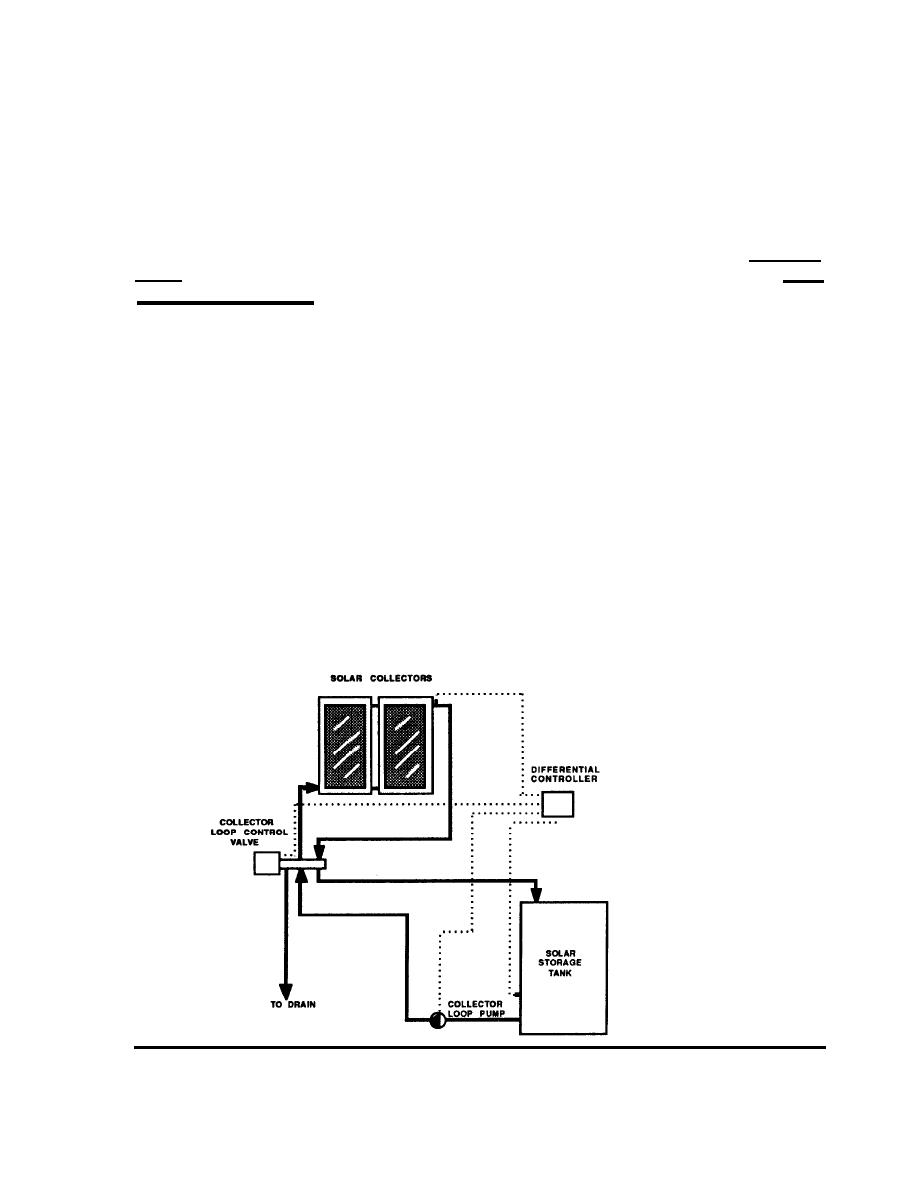

Custom Search
|
|

|
||
 A heat exchanger either inside or outside of the reservoir tank transfers the heat
from the solar loop water and into storage water, that is pumped in and out of the
storage tank.
While this system appears to be similar to a closed-loop system, there are two
important differences. First, the solar loop fluid is water, and must be drained during
freezing conditions. This means the collectors and all exposed piping must be
above the drainback reservoir tank and pump. Also, the collectors and piping must
be sloped for drainage.
Second, the solar loop water is not under pressure. This means it does not require
a fill/drain assembly, expansion tank or check valve. However, because the loop is
not always completely filled, the pump must be large enough to overcome not only
friction, but gravity as well when filling the collectors.
2.4 BASIC CONFIGURATION OF DRAINDOWN SYSTEMS
A third method allows the storage water (under street pressure) to enter the solar
collectors and piping. When solar energy is available, a pump circulates the water
through the system to move heat into storage.
In a draindown solar system, the collector loop is filled by water pressure whenever
the pump needs to run. This means the pump is not working against gravity, and
can be relatively small. (Figure 2-13)
FIGURE 2-13
A Draindown Solar
Heating System
OPERATION
2.4 DRAINDOWN SYSTEMS
17
|
 |
|
 |
||